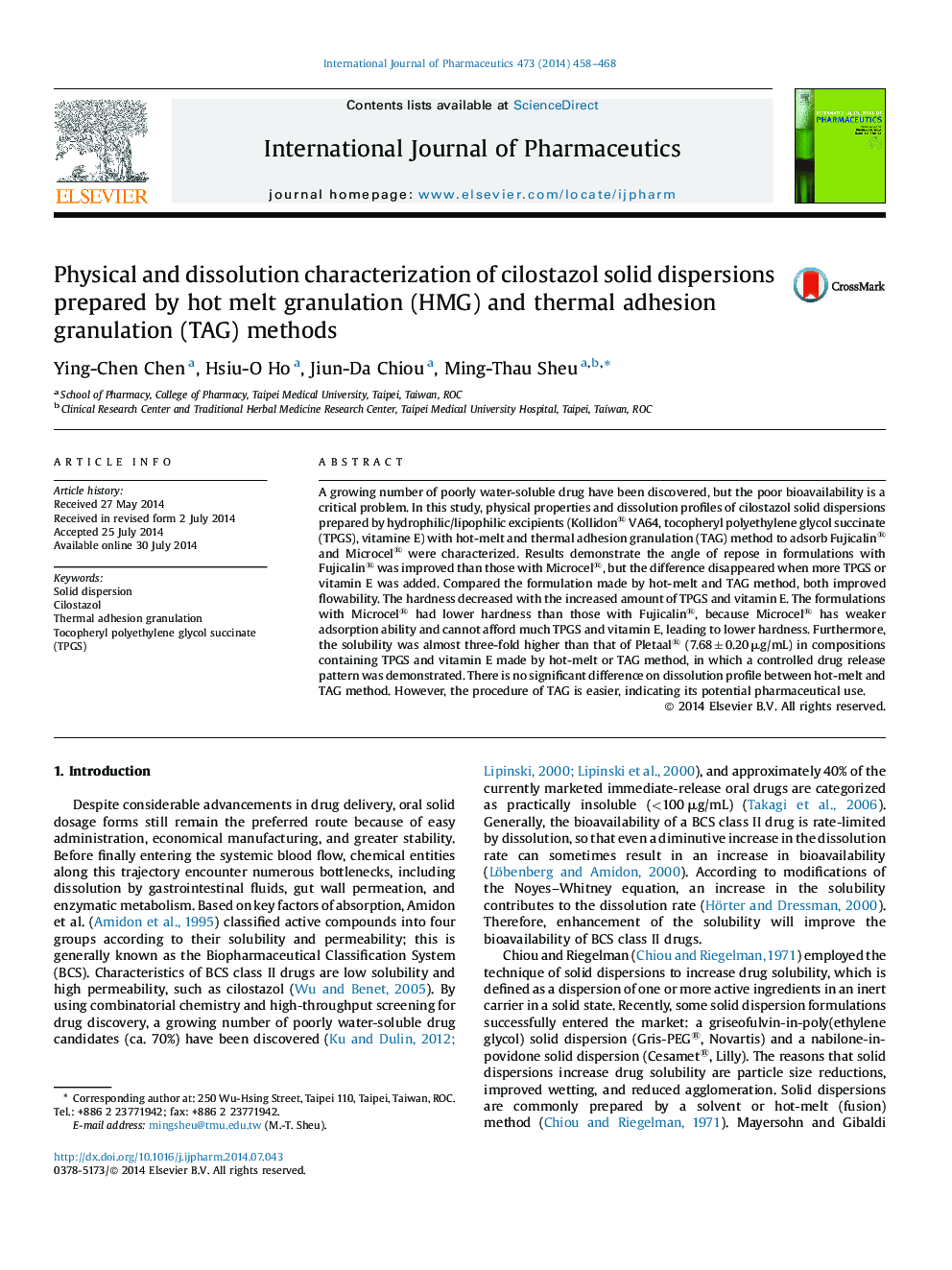| کد مقاله | کد نشریه | سال انتشار | مقاله انگلیسی | نسخه تمام متن |
|---|---|---|---|---|
| 5819497 | 1557353 | 2014 | 11 صفحه PDF | دانلود رایگان |

A growing number of poorly water-soluble drug have been discovered, but the poor bioavailability is a critical problem. In this study, physical properties and dissolution profiles of cilostazol solid dispersions prepared by hydrophilic/lipophilic excipients (Kollidon® VA64, tocopheryl polyethylene glycol succinate (TPGS), vitamine E) with hot-melt and thermal adhesion granulation (TAG) method to adsorb Fujicalin® and Microcel® were characterized. Results demonstrate the angle of repose in formulations with Fujicalin® was improved than those with Microcel®, but the difference disappeared when more TPGS or vitamin E was added. Compared the formulation made by hot-melt and TAG method, both improved flowability. The hardness decreased with the increased amount of TPGS and vitamin E. The formulations with Microcel® had lower hardness than those with Fujicalin®, because Microcel® has weaker adsorption ability and cannot afford much TPGS and vitamin E, leading to lower hardness. Furthermore, the solubility was almost three-fold higher than that of Pletaal® (7.68 ± 0.20 μg/mL) in compositions containing TPGS and vitamin E made by hot-melt or TAG method, in which a controlled drug release pattern was demonstrated. There is no significant difference on dissolution profile between hot-melt and TAG method. However, the procedure of TAG is easier, indicating its potential pharmaceutical use.
165
Journal: International Journal of Pharmaceutics - Volume 473, Issues 1â2, 1 October 2014, Pages 458-468